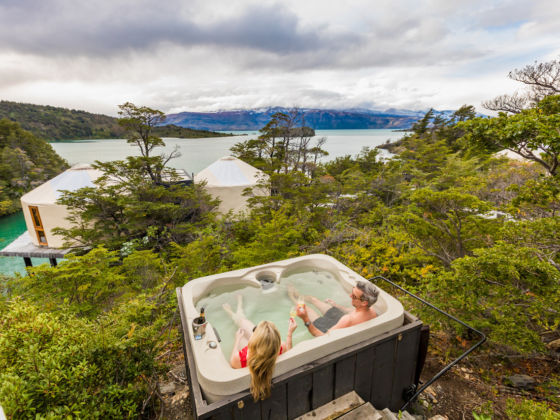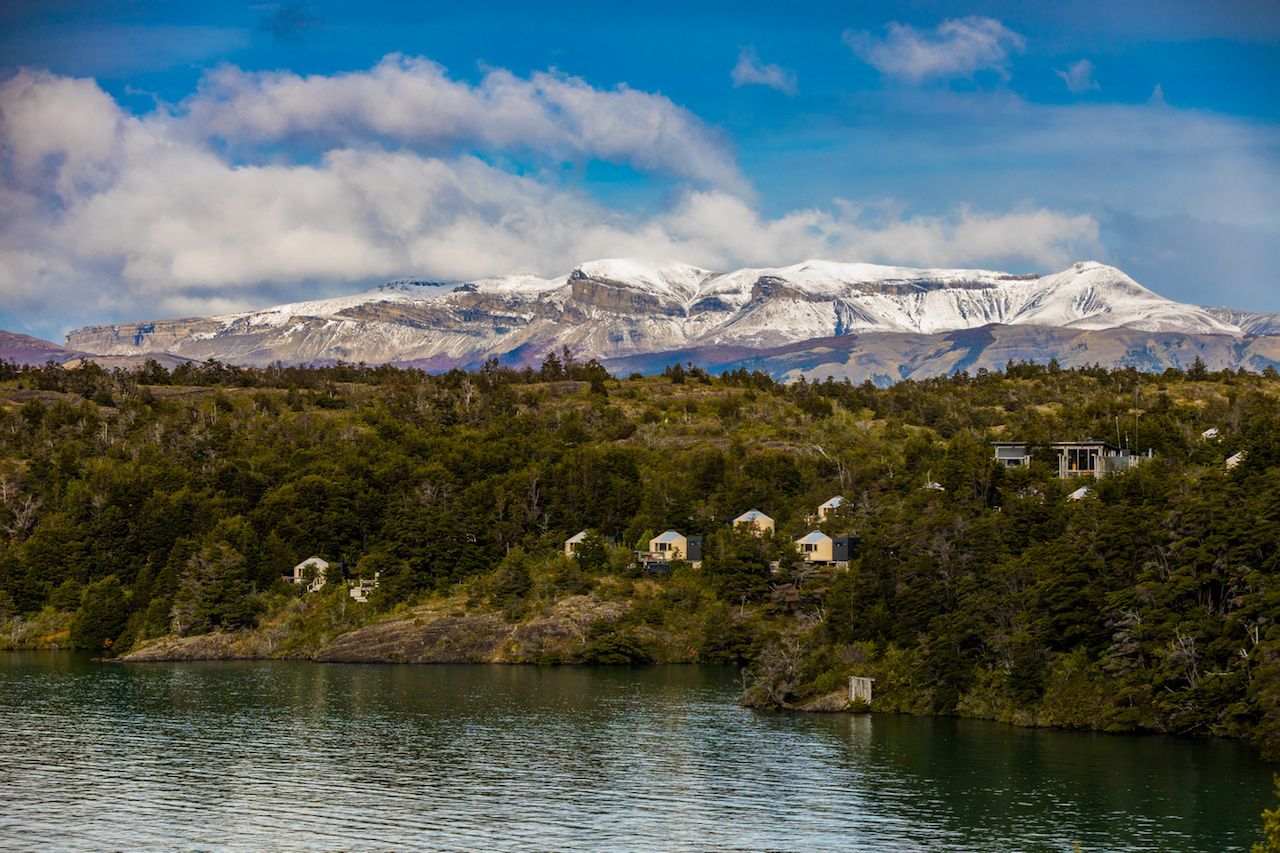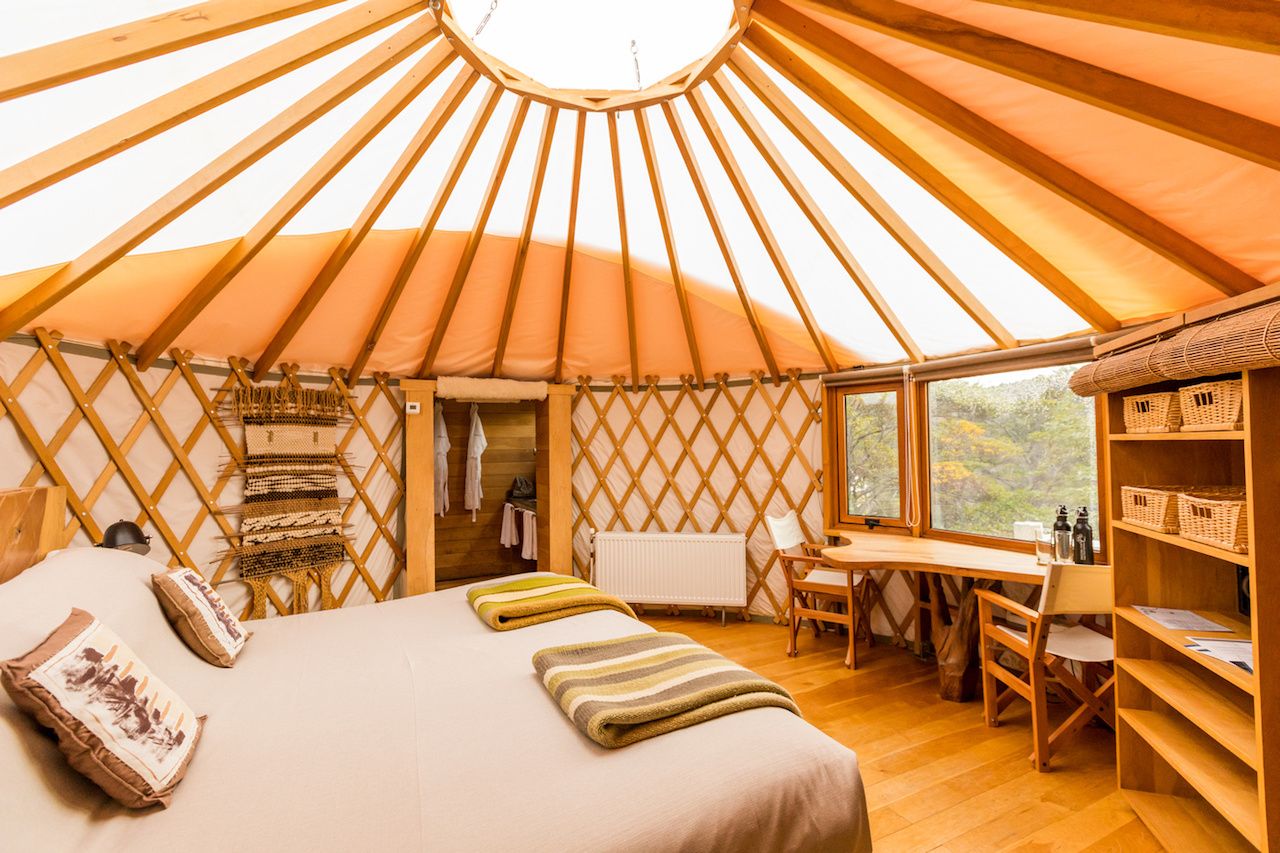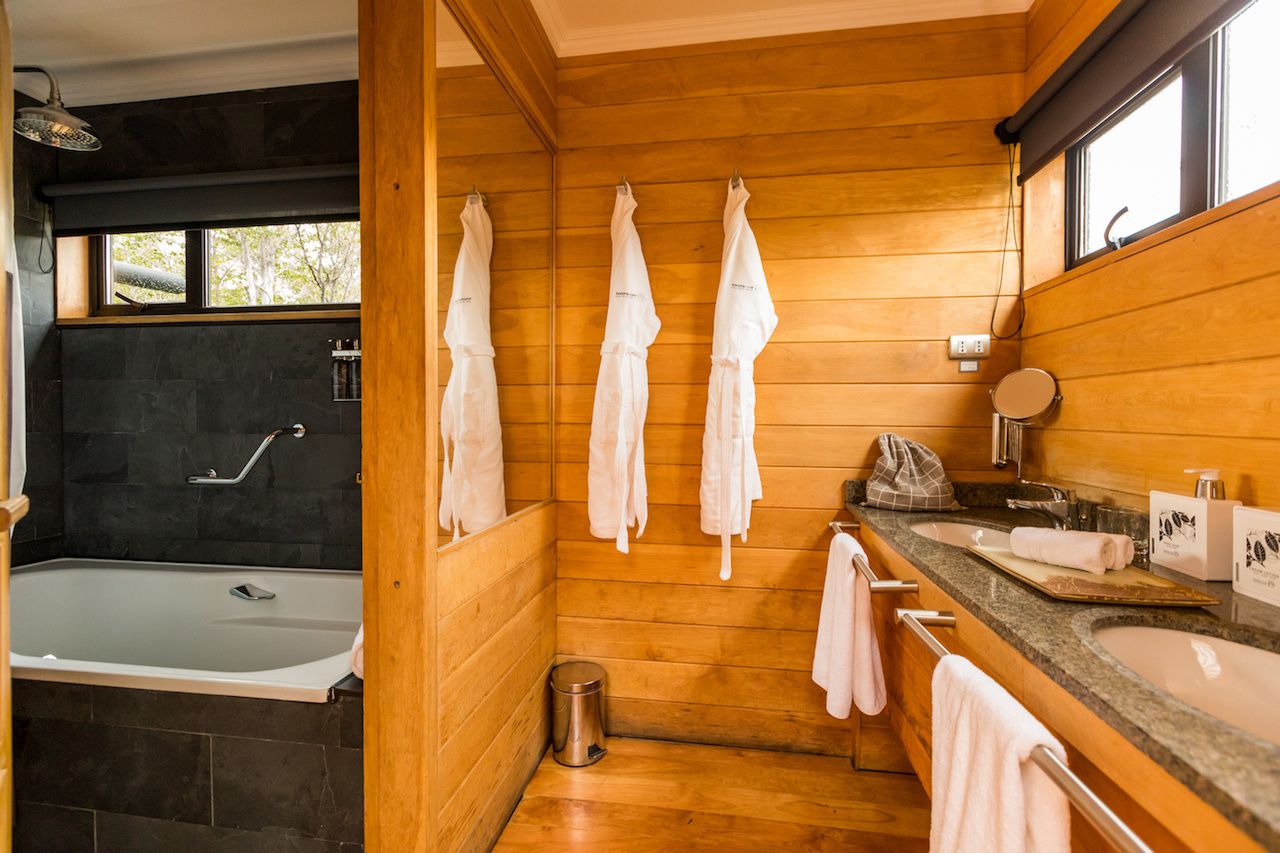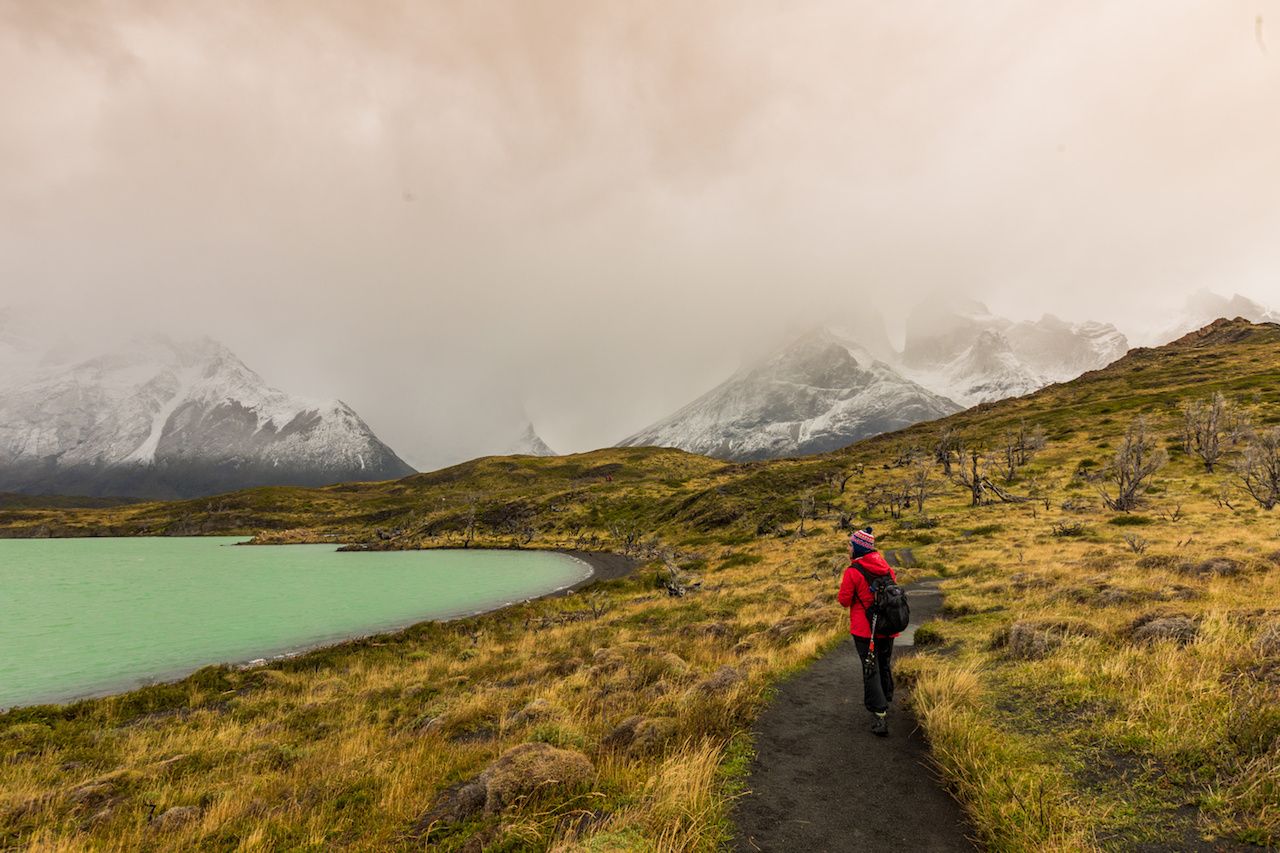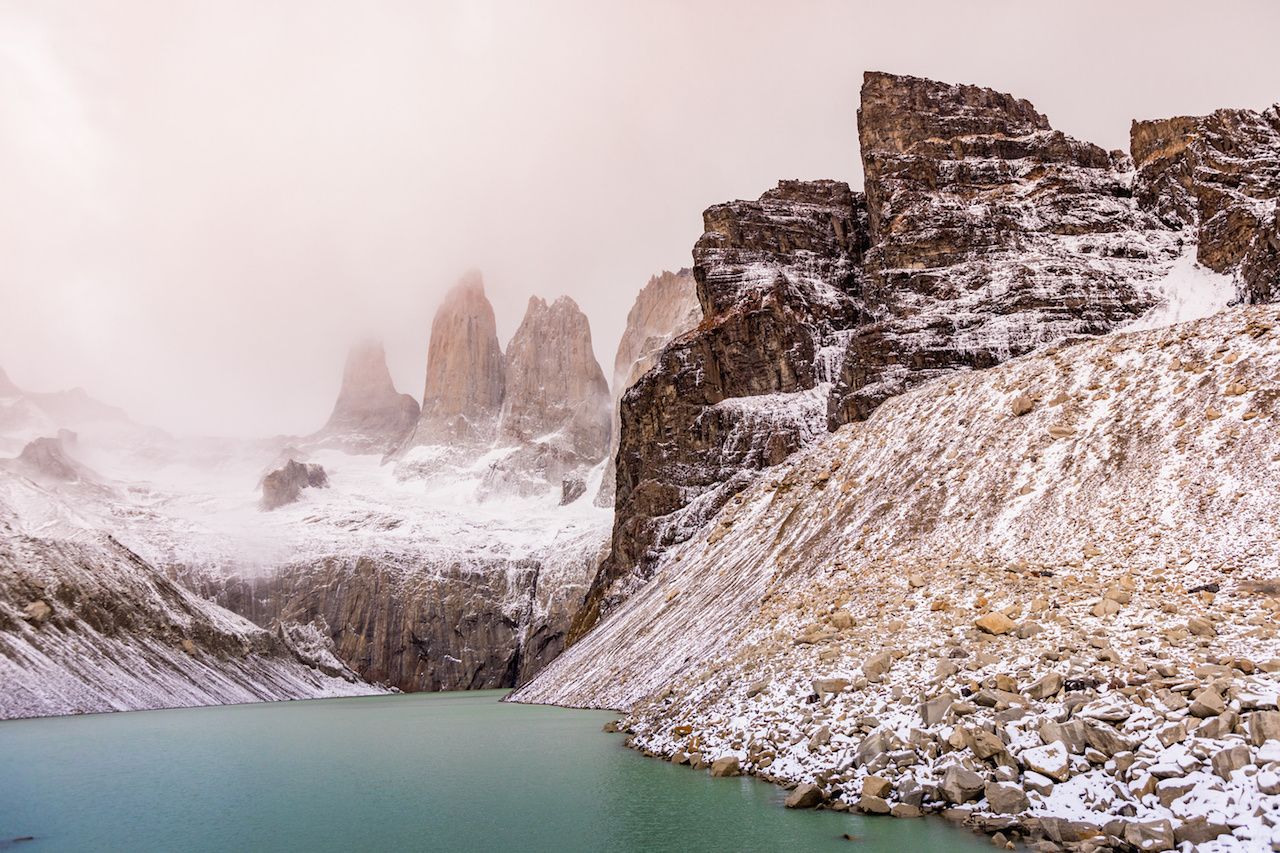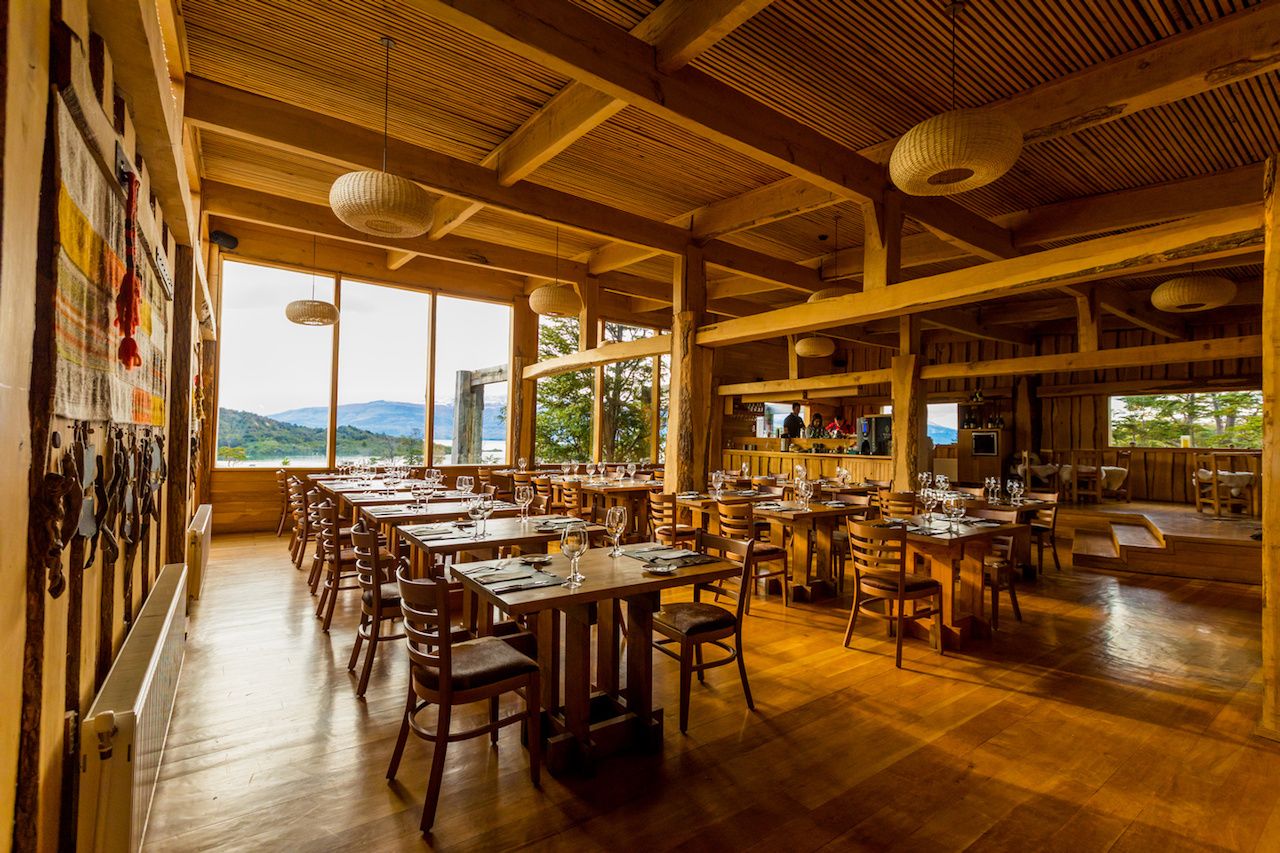You don’t get a whole lot of street cred for glamping.
Tell your friends you’re going on a mission to Patagonia, and they’ll imagine you hiking up snowy boulders and sleeping in flimsy tents on a mountainside. Real character-building stuff. Post pictures sipping Champagne in a jacuzzi that same night, and now you’re a bougie tourist.
But really, who cares? Because when you can enjoy some of the most spectacular wilderness in the world from the warmth of a finely appointed yurt, street cred doesn’t seem so important.
